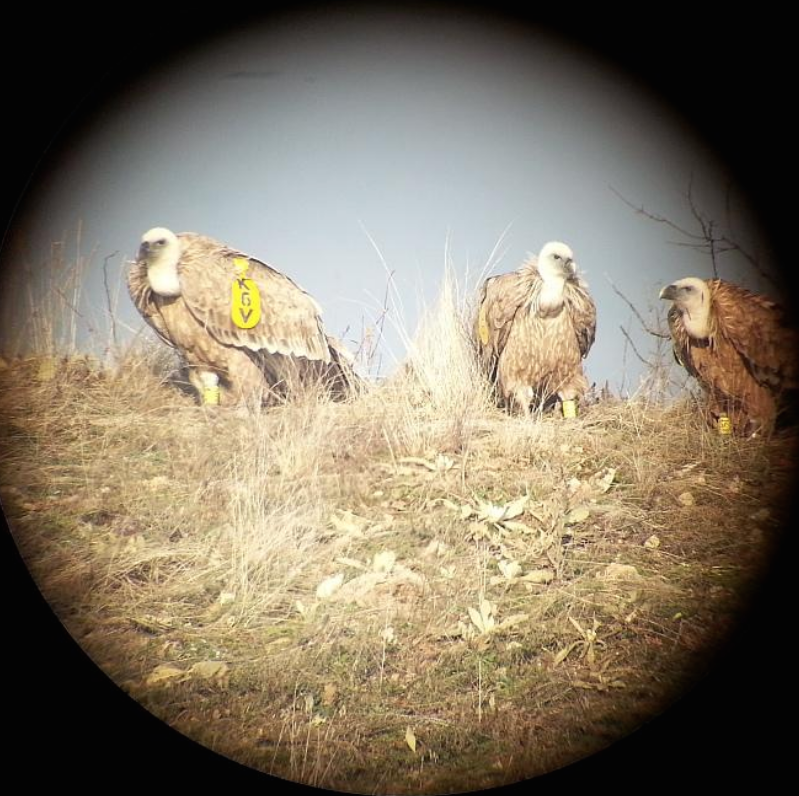Griffon Vulture Bulgaria
Returning Griffon Vultures to the Balkan Mountains in Bulgaria
- Homepage
- Pages
- Our Work
- Reintroduction And Restocking
- Griffon Vulture to Bulgaria
© Green Balkans
The Griffon Vulture population in Bulgaria suffered a dramatic decline through most of the 20th century due to human persecution, use of poisonous baits and lack of sufficient food. Conservationists considered the species extinct in the country in the 1960s until the discovery of 28 birds in 1978 and one breeding pair in the Rhodope Mountains. Multiple stakeholders joined forces to help restore the population of the species in Bulgaria through implementing concrete conservation efforts.
GRIFFON VULTURES SUCCESSFULLY BREED IN THE CENTRAL BALKAN MOUNTAINS AFTER 70+ YEARS!
In the summer of 2015, the first Griffon Vulture chick successfully hatched in the Balkan Mountains. The little vulture was baptised Michel in honour of Michel Terrasse — a pioneer of vulture conservation and a close collaborator with the VCF.

The first pilot releases of Griffon Vultures took place at Kotlenska Stara Planina in 2009, with the release of five birds. Still, preparations go back to 2003 with the launch of the long-term International Action Plan for the Recovery and Conservation of Vultures on the Balkan Peninsula and Adjacent Regions! More releases followed with the start of the Vultures Return in Bulgaria project in 2010, aiming to see the return of the Griffon Vultures in the Balkan Mountain in Bulgaria, where the species went extinct about 100 years ago. The Green Balkans, the Foundation for Wild Flora and Fauna (FWFF), the Bulgarian Society for the Protection of Birds (BSPB) and the Vulture Conservation Foundation (VCF), in collaboration with the Bulgarian Ministry for Environment and Waters have put a lot of effort to achieve this outcome by importing and releasing Griffon Vultures and tackling threats. Between 2010 to 2014, a total of 264 Griffon Vultures and a single Cinereous Vulture were imported within the Vultures Return in Bulgaria project. The project team secured wild birds from Spain and France, where their populations are abundant and stable. In addition to that, the project imported several captive-bred birds from zoos in France, Spain, the Czech Republic, Germany and the Netherlands. In total, 205 different Griffon Vultures were released from the four adaptation aviaries maintained within the Vultures Return in Bulgaria project. Only three years after the pilot released in 2009, reintroduced Griffon Vultures attempted to breed at the Eastern Balkan Mountains in May 2012. And a few years later, the very first confirmed Griffon Vulture chick hatched into the wild in 2015 at the Vrachanski Balkan. The population of the species is gradually increasing, and the project’s efforts are now continuing within the Vultures Back To LIFE projects. The new project is finalizing the Griffon Vulture restoration in Bulgaria and mainly aims to establish a nesting population of Cinereous Vultures, which went extinct in the country.
2020 MARKED THE 10TH YEAR ANNIVERSARY SINCE FIRST RELEASES
Ten years after the beginning of the Griffon Vulture releases, the species is now recovered in the region with 15 to 18 pairs nesting in Vrachanski Balkan, 18 to 23 pairs in Eastern Stara Planina, and local colonies numbering up to 50 to 70 and 80 to 100 birds respectively.

The Vulture Conservation Foundation has supported Bulgarian conservation groups to reintroduce the Griffon Vulture to the Stara Planina in the Balkan Mountains for many years. It has secured over 55 Griffon Vultures with an agreement by the Junta de Extremadura for release during the Vultures Return in Bulgaria and Vultures Back to LIFE projects. These birds hatched in the wild of Spain and were found in Extremadura as juveniles, suffering malnutrition and weakness. After a short period of recovery in rehabilitation centres, the VCF organized the transfer of the birds to Bulgaria, travelling over 4,000 km by land.


